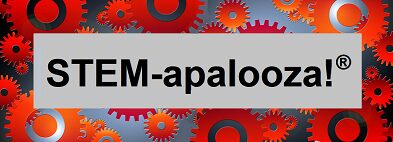FREE Resources for March STEM Madness!
What comes to mind when you hear the words March Madness? Basketball, right? Well, we actually think of basketball AND STEM when March arrives. Yes, basketball brackets and stats are a big part of this month. At the same time, it is a great opportunity to incorporate some interesting scientific concepts into your STEM lessons.
In this post, we have collected a group of FREE resources for March STEM Madness to enhance your teaching plans this month. Below, you’ll discover a few basketball-themed STEM resources to grab the interest of the sports fans in your classroom. In addition, there are other timely resources for this first month of spring. As a result, you’ll have all you need to enrich or supplement your March STEM lesson plans while appealing to a variety of learners.
FREE March STEM Resources
Compiled by STEM-apalooza!®
Basketball-Themed STEM Resources
Free STEM Challenge: Basketball Tower from More Than a Worksheet (Gr. 3-5)
This is an excellent STEM Inquiry Challenge perfect for the basketball madness of March, but it can also be used all year long! Students must use only newspaper and masking tape to create a tower than will support a basketball. So, get your students building things! The goal with this resource is to make STEM as easy to implement as possible!
March Madness STEM Resources from Teachers eGFI
Check out this clickable eGFI collection of bracket-busting resources, including BracketOdds from the University of Illinois computer science STEM learning laboratory! What’s more, discover and display graphically-stunning posters illustrating how players calculate successful shots and other basketball forces, energy, and math concepts from Chevron’s STEM Zone’s Game On Basketball—AND much more.
Surface Science: Where Does a Basketball Bounce Best? by Teisha Rowland, PhD, Science Buddies (Gr. 3-6)
Which surface allows the basketball to bounce the highest? Grab a basketball and try this activity to find out! Key concepts presented here are energy, gravity, collisions and sports science.
Bouncing Basketballs: How Much Energy Does Dribbling Take? by Teisha Rowland, PhD, Science Buddies (Gr. 6-8)
When a basketball bounces, it has two different types of energy: kinetic energy and potential energy. Here, students will determine how different surfaces affect how high a basketball bounces relative to the height from which it was dropped.
Physics of Dribbling a Basketball from Physics (Gr. 4-8)
Why does a ball always bounce back up almost to the height it was dropped from? Well, a rule that physicists discovered is that energy is conserved, which means you can’t create or destroy energy, but you can change it to different forms of energy. This resource provides a very brief description and explanation of the phenomenon.
March Madness Math Activity for Middle School from MashUp Math (Gr. 6-8)
Are you ready for the madness with MATH? The NCAA national basketball tournament has begun & March Madness is sweeping the nation. Use this national event to entice & engage students in STEM learning with these math & probability activities!
Other Spring-Themed STEM Resources
Spring STEM Activities For Kids from Little Bins for Little Hands (PreK-Gr. 5)
It’s time to explore Spring STEM activities for kids! Daffodils are beginning to bloom, and the hint of warmer weather is approaching! Spring is an excellent time of year to explore plants, weather, light, bugs, and more! It’s also a great time to think about taking STEM outside. Discover plenty of science, technology, engineering, and math ideas here perfect for Spring learning to share with you!
DIY Wind Meter STEM Activity from There’s Just One Mommy (Gr. 3-6)
Learn how to build a wind meter (wind anemometer) and measure the wind with this spring STEM activity for kids. When completed, students can continue studying the weather with other related unit activities like the one to follow.
Easy Homemade Weather Instruments for Kids from Sciencing by Leaf Group Media (Gr. 6-12)
Learn how to make a DIY weather station at home with your kids or for the classroom. This activity includes a DIY thermometer, rain gauge, barometer and anemometer. Use the products created as a basis for additional study of meteorology and weather.
